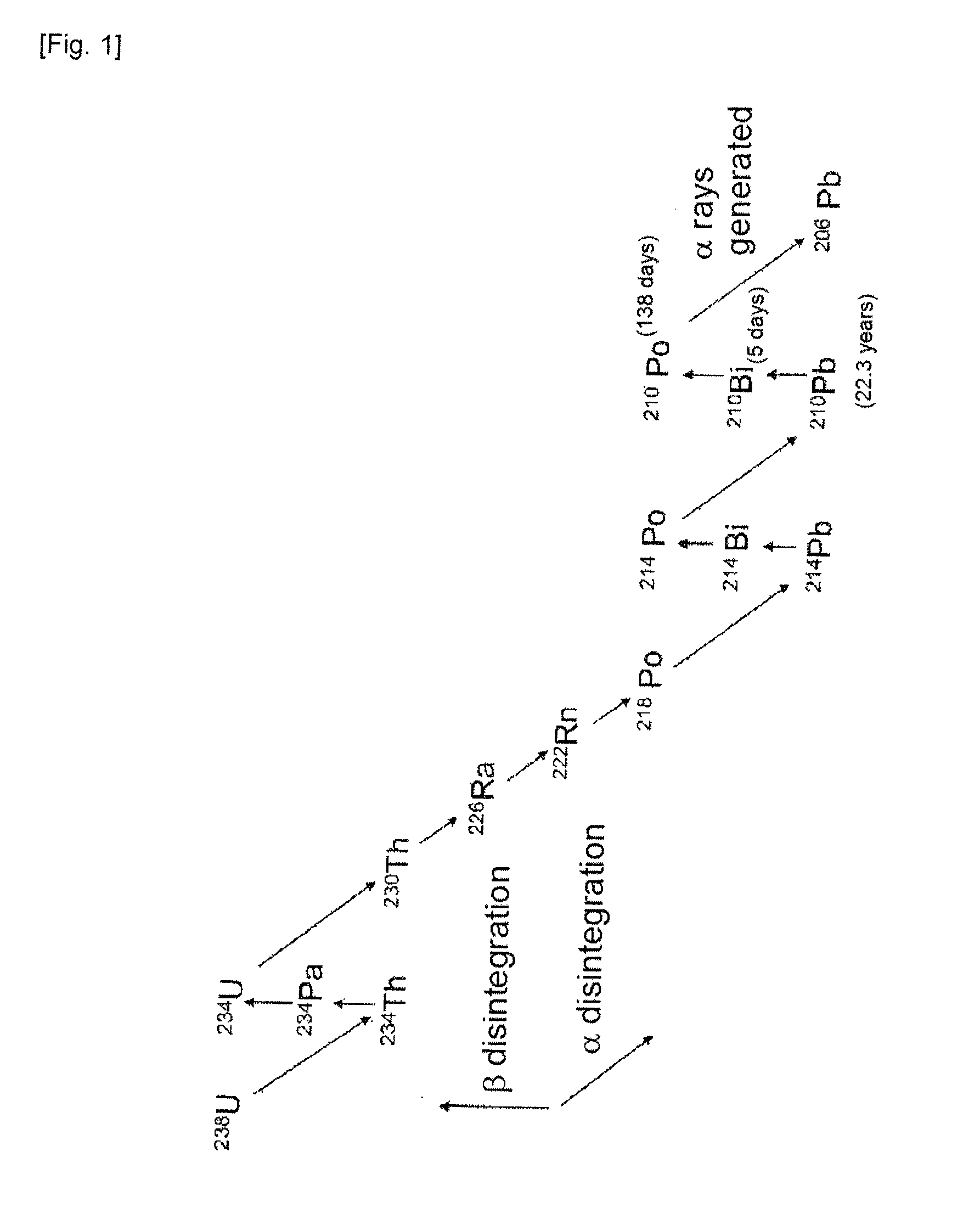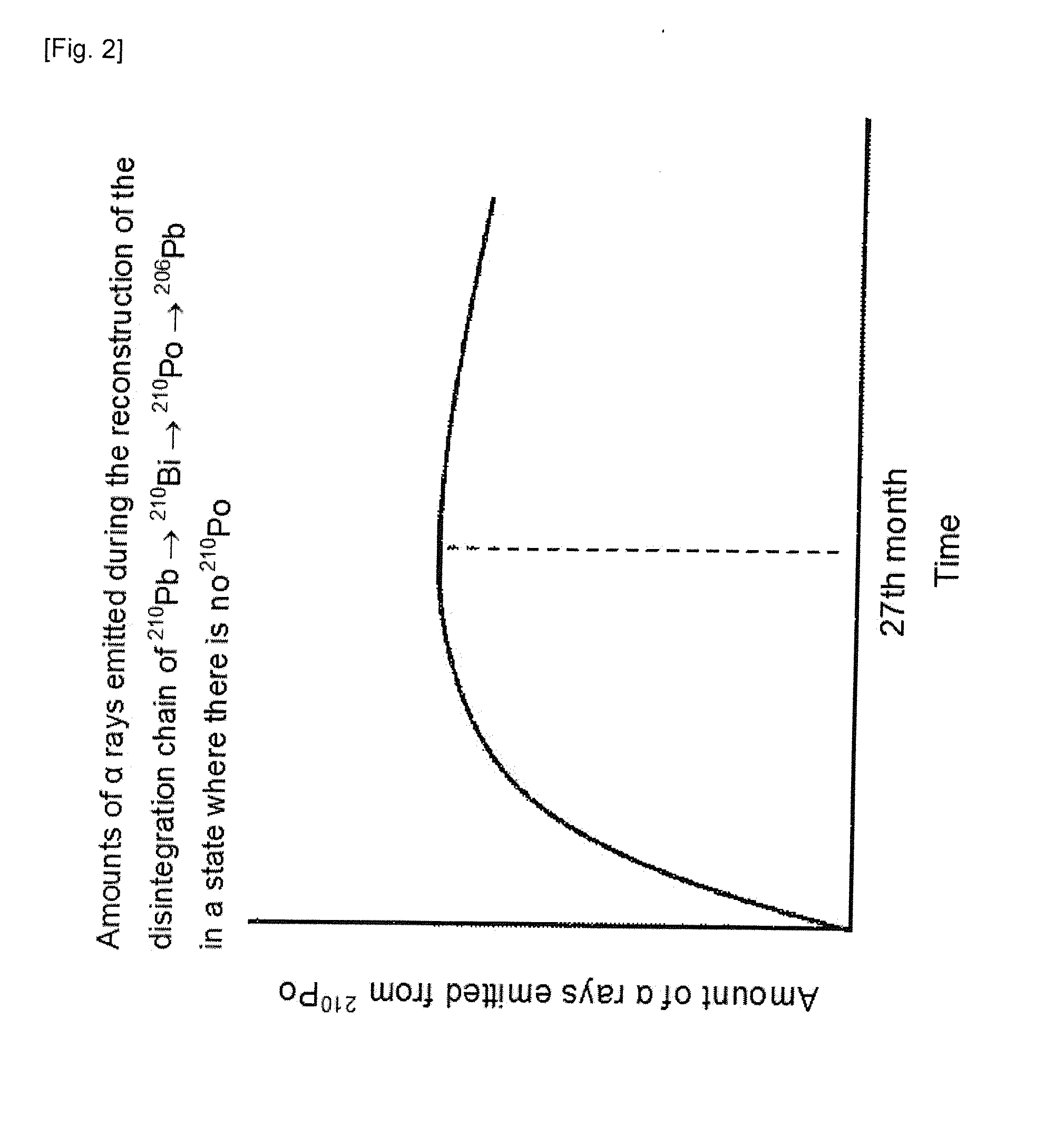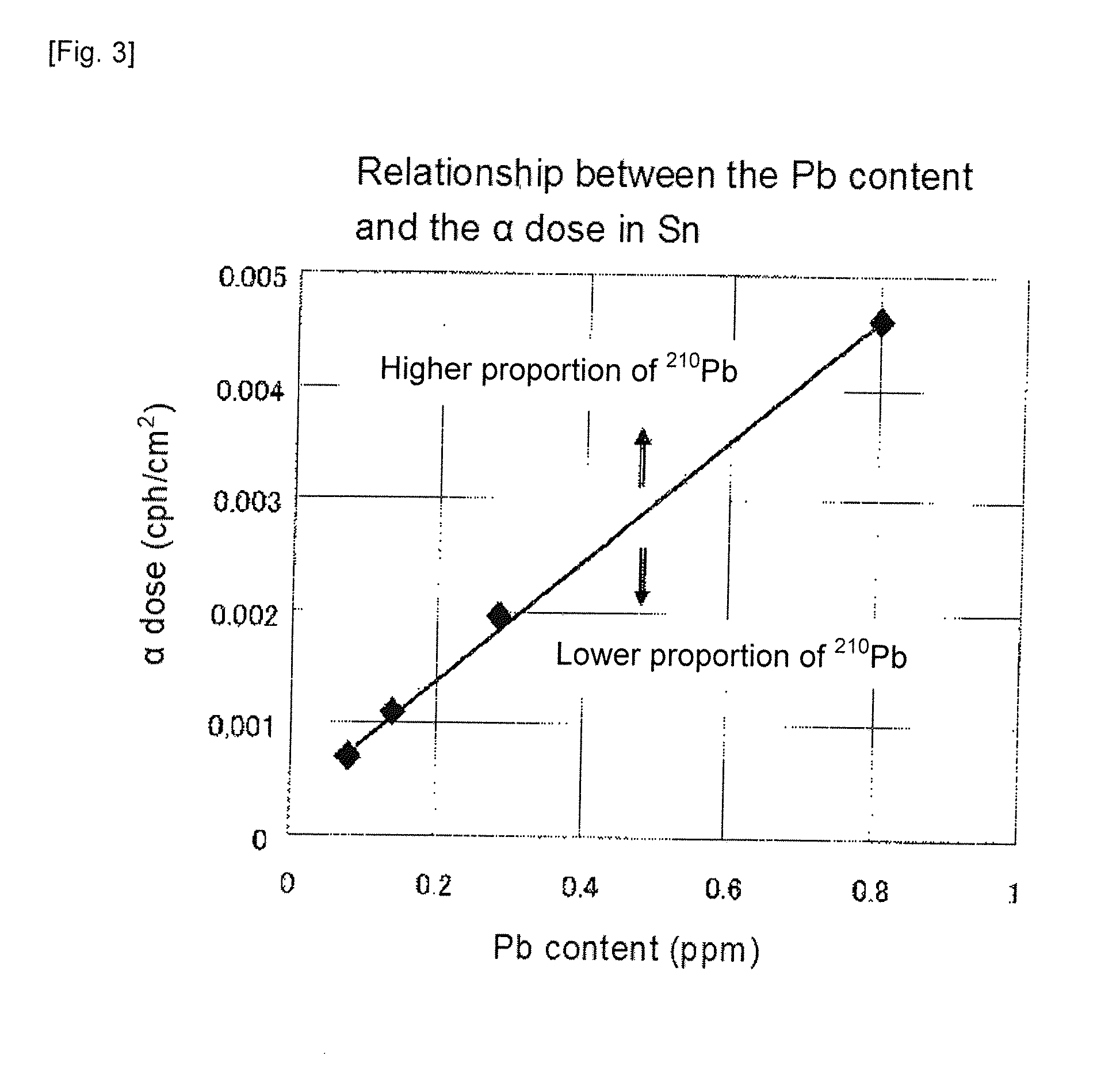Low alpha-Dose Tin or Tin Alloy, and Method for Producing Same
a technology low alpha-dose, which is applied in the field of tin or tin alloys, can solve the problems of increasing requiring a complex process of removing pb, and the inability to use lower dose, so as to achieve high densification, increase the risk of soft errors, and low operation voltage and cell capacity
- Summary
- Abstract
- Description
- Claims
- Application Information
AI Technical Summary
Benefits of technology
Problems solved by technology
Method used
Image
Examples
example 1
[0060]Raw material tin with a purity level of 3N was leached in hydrochloric acid (or sulfuric acid), and the resulting leachate having a pH of 1.0 and an Sn concentration of 80 g / L was used as an electrolyte. Using a tin plate obtained by casting raw material tin as the anode, and a titanium plate as the cathode, electrolysis was carried out under conditions where the electrolysis temperature was 30° C., and the current density was 7 A / dm2.
[0061]When the thickness of the tin electrodeposited on the cathode reached about 2 mm, the electrolysis was halted, and the cathode was taken out from the electrolytic cell. The electrodeposited tin was collected by being removed from the cathode. After the collection, the cathode was returned to the electrolytic cell, and the electrolysis was started again. This operation was repeated. The collected electrodeposited tin was washed and dried, and melted and cast at a temperature of 260° C. to obtain a tin ingot.
[0062]The tin ingot was subject to...
example 2
[0069]Raw material tin with a purity level of 3N was leached in hydrochloric acid (or sulfuric acid), and the resulting leachate having a pH of 1.0 and an Sn concentration of 80 g / L was used as an electrolyte. Using a tin plate obtained by casting raw material tin as the anode, and a titanium plate as the cathode, electrolysis was carried out under conditions where the electrolysis temperature was 30° C., and the current density was 1 A / dm2.
[0070]When the thickness of the tin electrodeposited on the cathode reached about 2 mm, the electrolysis was halted, and the cathode was taken out from the electrolytic cell. The electrodeposited tin was collected by being removed from the cathode. After the collection, the cathode was returned to the electrolytic cell, and the electrolysis was started again. This operation was repeated. The collected electrodeposited tin was washed and dried, and melted and cast at a temperature of 260° C. to obtain a tin ingot.
[0071]The tin ingot was subject to...
example 3
[0077]Raw material tin with a purity level of 3N was leached in hydrochloric acid (or sulfuric acid), and the resulting leachate having a pH of 1.0 and an Sn concentration of 80 g / L was used as an electrolyte.
[0078]Using a tin plate obtained by casting raw material tin as the anode, and a titanium plate as the cathode, electrolysis was carried out under conditions where the electrolysis temperature was 30° C., and the current density was 1 A / dm2.
[0079]When the thickness of the tin electrodeposited on the cathode reached about 2 mm, the electrolysis was halted, and the cathode was taken out from the electrolytic cell. The electrodeposited tin was collected by being removed from the cathode. After the collection, the cathode was returned to the electrolytic cell, and the electrolysis was started again. This operation was repeated. The collected electrodeposited tin was washed and dried, and melted and cast at a temperature of 260° C. to obtain a tin ingot.
[0080]The tin ingot was subje...
PUM
| Property | Measurement | Unit |
|---|---|---|
| Fraction | aaaaa | aaaaa |
| Fraction | aaaaa | aaaaa |
| Time | aaaaa | aaaaa |
Abstract
Description
Claims
Application Information
 Login to View More
Login to View More - R&D
- Intellectual Property
- Life Sciences
- Materials
- Tech Scout
- Unparalleled Data Quality
- Higher Quality Content
- 60% Fewer Hallucinations
Browse by: Latest US Patents, China's latest patents, Technical Efficacy Thesaurus, Application Domain, Technology Topic, Popular Technical Reports.
© 2025 PatSnap. All rights reserved.Legal|Privacy policy|Modern Slavery Act Transparency Statement|Sitemap|About US| Contact US: help@patsnap.com



